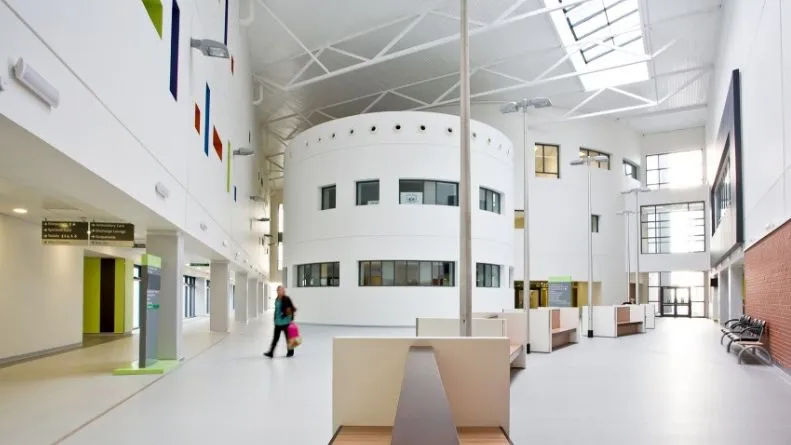Tracking T34 syringe drivers at NHS Forth Valley
When a proposal suggested that an additional 50 T34 syringe drivers were needed at NHS Forth Valley in Scotland, Bryan Hynd, Head of Medical Physics, decided to track all available devices with the active RFID Discovery system.
This enabled NHS Forth Valley to locate and better utilize these specialist pumps so demand can now be met with the existing fleet of equipment. This has not only avoided a total capital cost of £50,000 to purchase additional devices, but also made it easier for nurses to locate devices when required.
Challenge
According to purchasing records NHS Forth Valley should own a total of 40 T34s, but at one point only 4 of them could be found.
Sandra Campbell, Macmillan Nurse Consultant for Cancer & Palliative Care has been involved in the management of pumps at NHS Forth Valley since 2001. She explains: “Palliative care nurses used to spend a lot of time trying to locate devices. There were never enough of them available. We tried all sorts of systems over the years, but nothing ever really solved the problem.”
T34s are designed to be less intrusive for palliative care. Sandra comments: “Before implementing the tracking there were occasions when we’ve had to use larger devices which goes against our ethos of de-medicalising end-of-life care.”
Purchasing an additional 50 devices might have solved the problem of pump availability but would have cost the Trust £50,000 and also added to the cost of regular maintenance.
Background
NHS Forth Valley had already been using an active RFID Discovery system to track a total of 2,500 other mobile medical devices, helping the Trust save time spent looking for equipment, improve utilisation levels and reduce the requirement to purchase new devices.
Each mobile medical device is fitted with an active RFID tag which broadcasts its unique ID. Signals are picked up by a network of 170 fixed readers which are installed throughout the hospital. A central database reports the location of each device, and can be interrogated via a simple user interface, so clinical staff can see the location of each device in real time.
“Tracking devices means that they are shared better between wards and we find that 6 or 7 of them are available at any one time when needed.”
Bryan Hynd, Head of Medical Physics
How are T34s tracked?
The T34 project was implemented in March 2016 and involved fitting active tags to each of the pumps. Tags were attached to the accompanying lockbox, a safety feature designed to stop any tampering with the dosage of the drugs.
In addition, all spare pumps were placed on a shelf outside the Medical Physics department with 24-hour access for nurses. When a pump is removed, the system automatically tracks its location.
NHS Forth Valley’s T34s pumps are dedicated for hospital use but sometimes they go out into the community when a patient who wishes to go to a hospice or home is discharged. The district nurses then change over the pump and replace it with one of their community devices. Bryan comments: “Since the devices have been tagged we know who the pump has gone home with and can easily follow up with the district nurses or the local hospice.”
Benefits
Since tagging the T34s, a total of 22 have been found. Bryan comments: “Tracking devices and introducing a central store means that now they are shared better between wards and we find that 6 or 7 of them are available at any one time.”
Palliative care nurses used to spend a lot of time trying to locate the devices. Now they can see how many of these pumps are in each of the areas and, if needed, contact a ward for the return of unused pumps.
Tracking the pumps has also made it much easier to locate the devices for maintenance. Bryan Hynd explains: “Being a high risk device, it is essential that they are being serviced regularly as a pump that isn’t functioning correctly can lead to administering the wrong dose of the required drug, which can have fatal consequences.”
It’s a fantastic system. Since we have started tracking the T34s, we have always had sufficient pumps on the shelf.
Key Benefits
- Capital cost of £50,000 avoided
- Right equipment is always available
- Time saved searching for devices
- Improved end-of-life care provision
Sandra Campbell, Macmillan Nurse Consultant for Cancer and Palliative Care said:
“It’s a fantastic system. [...] Since we have started tracking the T34s, we have always had sufficient pumps on the shelf.”


